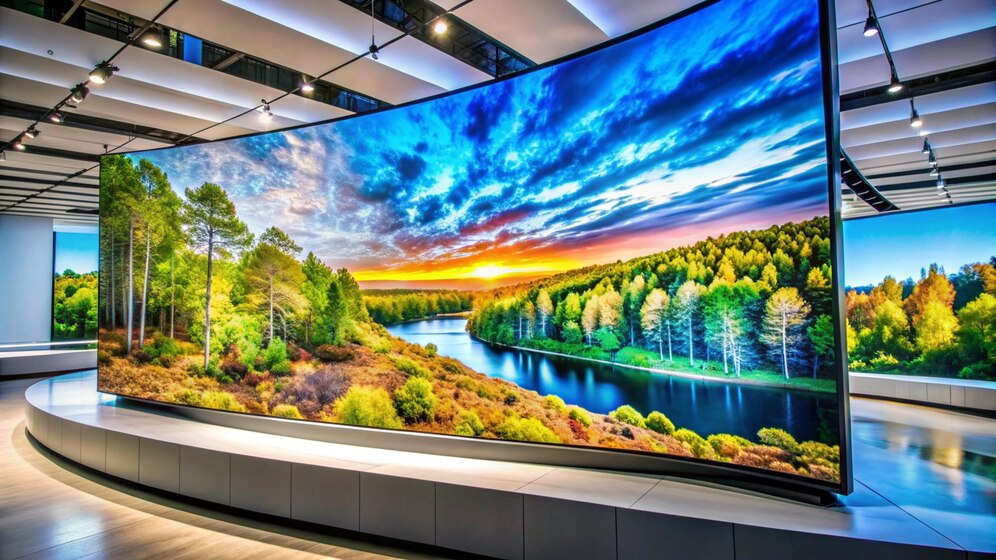LED advertising display screens are large digital displays that use light-emitting diodes (LEDs) to project clear, bright, and colorful images or videos. These displays are commonly found in outdoor advertising, retail signage, and even sports arenas, thanks to their high visibility and energy efficiency. In this guide, we’ll dive deep into the benefits of LED screens, how they compare to other display technologies, and tips for selecting the right one for your business.
Top Benefits of LED Advertising Display Screens
Why Choose LED Displays?
LED advertising screens stand out in the crowded world of digital advertising for a few key reasons. First and foremost, high visibility and brightness set them apart from other display technologies. Even in broad daylight, LED screens maintain a vibrant display that draws the eye. Whether used for billboards or in-store promotions, their brightness ensures visibility from a distance and under various lighting conditions.
Secondly, energy efficiency is another significant advantage. LED technology consumes less energy compared to traditional lighting or older display types, making it an eco-friendly option that also reduces long-term operational costs.
Lastly, longevity and durability are where LEDs truly shine. Built to withstand the elements, outdoor LED screens are designed for long-term use, with many lasting up to 100,000 hours. Their robust design means fewer repairs and replacements, ensuring a solid return on investment.

Comparing LED Advertising Screens with Other Display Technologies
LED vs. LCD Displays
When it comes to choosing between LED and LCD displays, understanding the differences in technology is essential. LED displays use tiny diodes to emit light, allowing for deeper blacks and brighter colors. In contrast, LCD displays rely on a backlight, which can sometimes lead to washed-out colors in brightly lit environments.
Performance-wise, LED screens have the edge in terms of brightness and image clarity, making them ideal for outdoor settings where sunlight can be a challenge. However, LCD screens tend to be more affordable, making them a popular choice for indoor use where ultra-high brightness is less critical.
In terms of cost, LED displays tend to be more expensive upfront but offer lower maintenance costs over time. LCD screens, while cheaper to purchase, may require more frequent replacements or maintenance due to their less durable nature.
Each type of display has its place—LEDs are ideal for outdoor advertising and large-scale displays, while LCDs are often better suited for smaller, indoor settings.
How to Choose the Right LED Advertising Display Screen
Key Factors to Consider
Choosing the right LED advertising display screen requires balancing several factors. The first consideration is size and resolution. Larger displays naturally draw more attention, but they also need higher resolutions to maintain image quality at bigger scales.
Next, consider the location—indoor or outdoor? Outdoor LED screens must be weatherproof and extremely bright, while indoor screens can focus more on resolution and design aesthetics.
Finally, budget plays a crucial role. Larger screens with higher resolutions and weatherproof capabilities will drive up costs. Businesses need to weigh the importance of screen quality against their financial constraints to make the best decision.
Best Practices for Using LED Advertising Display Screens
Tips for Maximizing Impact
To get the most out of your LED advertising display, it’s essential to focus on content creation. Keep your visuals dynamic, using vibrant colors and motion to capture attention. Short, punchy messages work best—after all, your audience may only have seconds to absorb your content.
Regular maintenance is also critical to extending the life of your screen. Clean the display regularly and check for any technical issues to avoid disruptions.
Finally, placement is everything. For maximum visibility, place your LED screen where foot traffic is highest and where your target audience is likely to see it. Strategic positioning can dramatically increase the effectiveness of your campaigns.
Frequently Asked Questions
What is the lifespan of an LED advertising display screen?
An LED screen can last anywhere between 50,000 to 100,000 hours, depending on the level of use and how well it is maintained. High-quality displays, when properly cared for, can operate for many years without significant degradation.
How much do LED advertising display screens cost?
The cost of LED advertising screens varies greatly, typically ranging from $2,000 to $50,000 or more. Factors like screen size, resolution, and additional features such as weatherproofing or interactivity can influence the price.
Conclusion
LED advertising display screens are game-changers in the world of marketing. They offer unparalleled visibility, energy efficiency, and long-term durability, making them a smart investment for businesses looking to stand out. Whether you’re considering a screen for an outdoor billboard or an indoor retail display, choosing the right LED screen can significantly enhance your advertising efforts. Ready to explore the world of LED displays? Start integrating them into your marketing strategy today for maximum impact!





